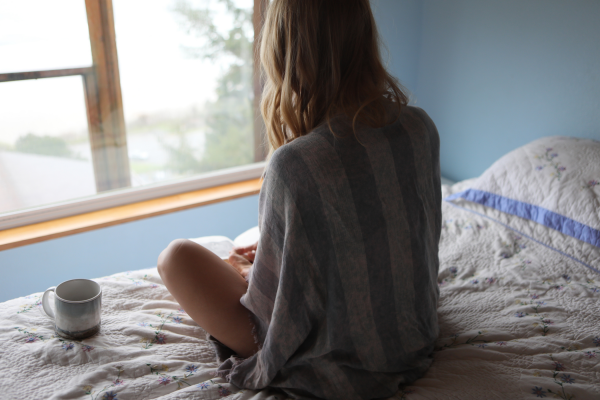
Are you now working at home a lot and do you notice that you often suffer from (low) back problems? That is of course very annoying… That is why we have listed 7 habits for you that most likely cause you such a problem with your back, with of course the solution. Are you reading along?
Read also :'3 reasons to train your back muscles'
Now that you work from home more (or all the time), you have probably already found several places in the house where you sit to work, including your bed. But if you're not careful, you can have a tendency to slump on your bed and work, putting tension on your lower back. The solution? Try to maintain the natural curve of your spine by placing an extra pillow behind your back. As long as you make sure you stay in the right position and that it feels comfortable!
Research has shown that poor sleep can be associated with lower back pain. No one knows exactly what the connection between the two is, but we do know that daily activities can put your body under stress and you need rest to recover from that. In other words, if you don't sleep well, your body can recover less well. Do you have trouble sleeping? Then take a look at your sleeping position:sleeping on your stomach can put stress on your back, so you may need to try to find another comfortable position. Is there a dent or slight sagging in your mattress? Then it may be useful to replace it, because the mattress must always be firm enough to bear your weight and soft enough to mold to the curves of your body.
Very tempting of course, watching Netflix on the couch when you don't have to work. But that is usually not great for your back either. Especially not if your back sinks into the couch. Although you might not think so, it has nothing to do with how long you sit on the couch, but simply how. Therefore make sure that you have support in your lower back when you sit, for example by sitting straighter on the couch or by placing a pillow in your lower back.
Old shoes can be so worn that they don't provide you with the support you need. This allows your feet to roll in or out as you walk, putting more stress on your lower back to still be able to walk stably. A shoe with the right support prevents this, keeping your legs, hips and back in line with each other. Therefore, buy a pair of shoes that are made for the shape of your feet, specifically the bowls of your feet. You will need a different kind of shoe if you have flat feet than if you have an arch under your foot.
Improper lifting and turning while gardening is common. Think of lifting bags of soil, large plants and of course heavy pots. This quickly puts tension on your lower back. The lifting strains the spine while the twisting puts tension on the sideways movements you make. Therefore, make sure that you lift safely, namely by bending your legs instead of lowering from your hips. Carry items close to your chest and avoid twisting your upper body while lifting. It can also help to train your core to prevent back pain, for example by doing a simple plank exercise.
Super fun, of course, going wild with baking in the kitchen. But there is a good chance that you will be standing on a hard surface for a long time. And if you don't have sturdy shoes on or even stand on your bare feet, you can suffer from your heels. This then adjusts how you stand and walk, which will have an effect on your entire lower body, from your ankles to your back. Therefore, avoid baking barefoot and wear shoes with sufficient support. Also watch your posture:don't lean over the counter and move closer to the counter to avoid leaning forward. Also take a break if you need to!
Don't you normally work from home? Then you are probably not only cramming more work into the same 8-hour workday, but you also probably get up less in between. And that's where your back problems come from:sitting puts 40% more stress on your back than standing. What can you do about it? Check the space between your back and the chair when you are sitting and put a cushion in between if there is still room. This gives you more balance. Also schedule regular stretch breaks. Lean forward, wrap your arms around your knees and hold for a minute. Then stand and arch your back by bringing your stomach forward as far as possible. Finally, reach your hands out to the sides while standing and try to reach down your thighs as far as you can. It would be best if you do this every hour to prevent your back problems!
Source: Realsimple.com